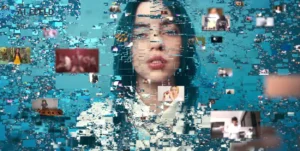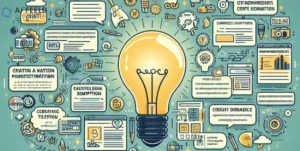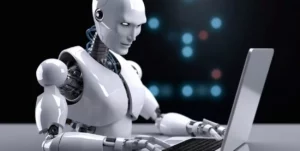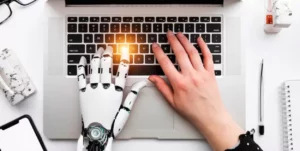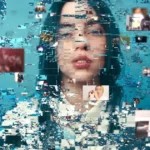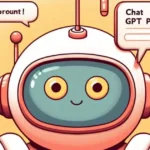In the present landscape, graphic designers play a pivotal role in creating visually appealing content for various industries. They blend creativity with technical skills to deliver compelling designs. The rise of AI in creative fields has added a layer of complexity to this traditional role.
Have you ever wondered, Will graphic designers be replaced by AI? Picture this: graphic designers are like artists who make things look stunning, and AI is like a clever robot. But will robots take over their job? It’s a curious question about the future of creativity and technology.
In the dynamic realm of graphic design, the advent of Artificial Intelligence (AI) has sparked debates about the future role of human designers. As technology continues to evolve, it’s crucial to explore the impact of AI on graphic design and the potential transformation of this creative field. Let’s dive into the cool world of graphic designers and find out if they have a new robotic rival.
Evolution of Graphic Design
Graphic design has evolved significantly over the years, transforming from manual techniques to the digital realm. In the early days, designers used pencils, pens, and brushes to create visuals on paper. With the advent of computers, graphic design transitioned into the digital era, where software like Adobe Photoshop and Illustrator revolutionized the field.
Today, designers harness advanced tools, including 3D software and virtual reality, pushing the boundaries of creativity. The evolution of graphic design showcases the dynamic interplay between traditional artistry and cutting edge technology, shaping the visual landscape in exciting and innovative ways.
In this rapidly changing landscape, it is crucial to stay abreast of emerging trends, such as the potential for AI to replace UX designers, and adapt to the evolving demands of the industry.
Current Role of Graphic Designers
Graphic designers are currently the architects of visual communication, translating ideas into captivating designs. They use their artistic skills and computer knowledge to craft eye catching designs for everything from websites to product packaging. Their work involves a deep understanding of aesthetics, branding, and client needs.
These creative minds are like visual storytellers, helping businesses and individuals communicate effectively with the world. Whether it’s designing logos, posters, or social media graphics, graphic designers bring ideas to life in a visually compelling way. With the introduction of AI, some aspects of their work are being redefined.
Rise of AI in Creative Fields
AI has made remarkable strides in image recognition, pattern analysis, and even generating content. This has led to the development of tools that can automate certain design processes, raising questions about the necessity of manual design interventions.
From suggesting color palettes to generating unique patterns, AI is taking the creative process to a whole new level. Graphic designers are teaming up with AI to make magic happen on screens and paper.
The Integration of AI in Graphic Design
AI is not here to replace graphic designers but to enhance their capabilities. The integration of AI in graphic design brings about automation in various processes, allowing designers to focus on more intricate aspects of their craft.
Automation in Design Processes
AI tools can automate repetitive tasks such as resizing images, selecting color schemes, and even suggesting layout options. This not only saves time but also allows designers to channel their energy into more complex and imaginative aspects of design.
AI Tools for Graphic Designers
Graphic designers now have access to a plethora of AI driven tools that aid in tasks like image manipulation, font selection, and even ideation. These tools act as collaborative partners, offering suggestions and improvements throughout the design process.
Enhancing Creativity with AI
Far from stifling creativity, AI has the potential to enhance it. By handling routine tasks, AI frees up time for designers to experiment, innovate, and explore new realms of creative expression.
Challenges Faced by Graphic Designers
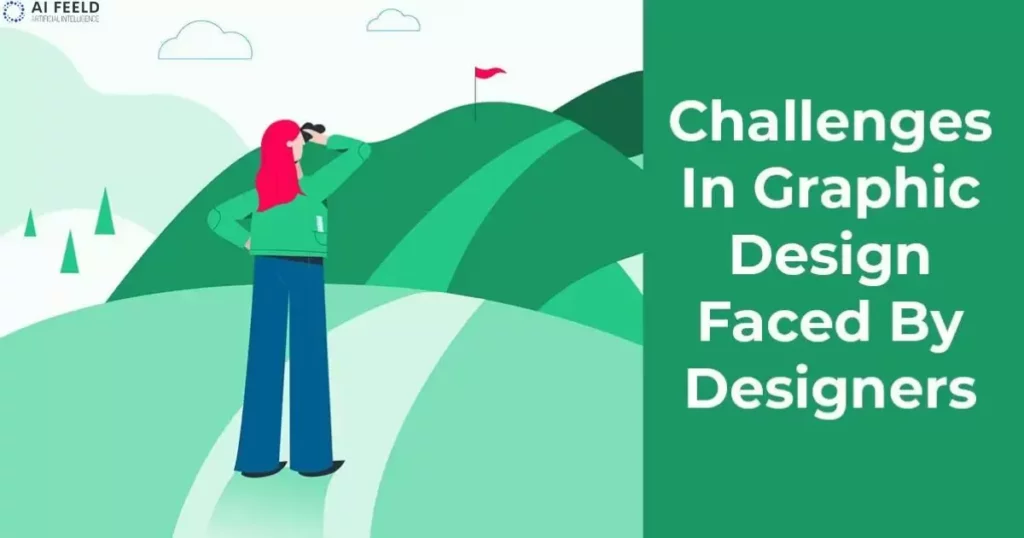
Graphic designers encounter various challenges in their creative journey. Firstly, meeting tight deadlines can be stressful, requiring quick turnarounds without compromising quality. Additionally, staying updated with rapidly evolving design software and trends demands continuous learning. Balancing client expectations and maintaining a unique artistic identity poses another significant challenge.
| Challenge | Description |
| Tight Deadlines | Graphic designers often face time constraints, necessitating efficient time management to deliver high quality work promptly. |
| Evolving Software and Trends | Staying abreast of the latest design tools and trends is crucial, demanding continuous learning to remain competitive in the dynamic design landscape. |
| Balancing Client Expectations | Striking a balance between meeting client specifications and maintaining a distinctive design style can be challenging for graphic designers. |
Balancing Human Creativity and AI Precision
In the dynamic realm of graphic design, a delicate dance unfolds between human creativity and AI precision. Graphic designers harness their imaginative prowess to conceptualize unique and visually captivating designs.
Simultaneously, AI tools bring forth unparalleled precision, aiding designers in refining details and streamlining processes. The harmonious integration of human ingenuity and AI’s exactitude not only enhances efficiency but also cultivates a space where creativity flourishes in tandem with technological advancements, pushing the boundaries of graphic design to new heights.
Concerns and Controversies
Intellectual Property Issues: Graphic designers often grapple with concerns related to intellectual property, as the line between inspiration and imitation can be blurry. Balancing creativity with ethical practices is crucial to avoid copyright infringement.
Underappreciation of Work: Despite the significant impact of graphic design on various industries, some designers face challenges in receiving proper recognition and compensation for their work. Advocacy for fair compensation and acknowledgment is an ongoing issue.
Pressure and Burnout: The fast paced nature of the design industry can lead to burnout among graphic designers. Tight deadlines, client expectations, and the constant evolution of design trends contribute to stress, emphasizing the need for a healthy work life balance.
Diversity and Inclusion: There is an ongoing conversation about diversity and inclusion within the graphic design field. Addressing the lack of representation and opportunities for underrepresented groups is essential for fostering a more inclusive and diverse creative community.
Technological Challenges: Keeping up with rapidly advancing design tools and technologies can be daunting. Graphic designers may face challenges in staying relevant and competitive, requiring continuous learning and adaptation to new software and design trends.
Navigating these concerns and controversies is integral to fostering a positive and sustainable environment for graphic designers, ensuring their contributions are valued and their well being is prioritized.
Future Trends
In the future, graphic designers will continue to embrace immersive technologies, such as augmented reality and virtual reality, to create engaging and interactive visual experiences. These professionals will also play a crucial role in the evolution of user interface (UI) and user experience (UX) design, focusing on creating seamless and intuitive digital interactions.
As the demand for sustainability grows, graphic designers will likely integrate eco friendly practices into their work, contributing to a more environmentally conscious design industry. Overall, the future trends in graphic design will be shaped by technological advancements, a focus on user centric design, and a commitment to sustainable practices.
Will graphic designers be needed in the future
In the future, graphic designers will continue to be in demand as businesses and individuals increasingly rely on visual communication. With the growth of digital media, social platforms, and online marketing, the need for skilled graphic designers to create visually appealing and effective content is likely to rise.
Whether it’s designing websites, crafting social media posts, or developing eye catching advertisements, graphic designers play a crucial role in conveying messages and capturing audience attention in our visually driven world. As technology evolves, graphic designers may also find new opportunities in areas such as virtual reality, augmented reality, and immersive multimedia experiences, further emphasizing their importance in the future landscape.
FAQs
Can AI fully replace graphic designers?
No, AI is not intended to replace graphic designers but to augment their capabilities. The human touch in design remains irreplaceable.
How can graphic designers adapt to AI changes?
Adaptation involves upskilling, embracing new technologies, and viewing AI as a collaborative tool rather than a threat.
Are there limitations to AI in graphic design?
Yes, AI has limitations, particularly in understanding nuanced human emotions, cultural context, and complex creative decision making.
Will AI replace graphic designers 2023?
Designers won’t be fully replaced by AI. While it automates tasks like layout creation, AI can’t replace the unique creativity, critical thinking, and problem solving skills designers bring to their craft.
Conclusion
The fear of graphic designers being replaced by AI is not likely to come true. While technology is advancing, human creativity, emotion, and unique problem solving abilities remain crucial in graphic design. AI tools may assist designers, but they cannot replace the personal touch and artistic intuition that humans bring.
Instead of replacement, it’s more about collaboration between designers and AI, enhancing the creative process. Graphic designers will continue to be essential, infusing their ideas and perspectives into visual communication, ensuring a human touch in the increasingly digital world. So, rather than worrying about being replaced, graphic designers can embrace the evolving landscape, confident in their irreplaceable role.

